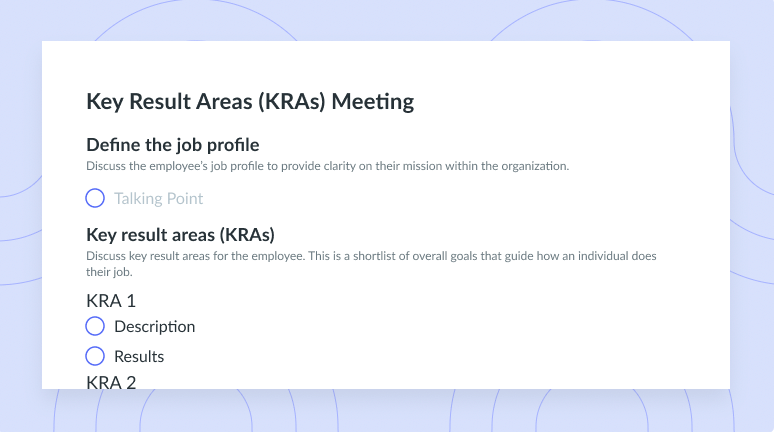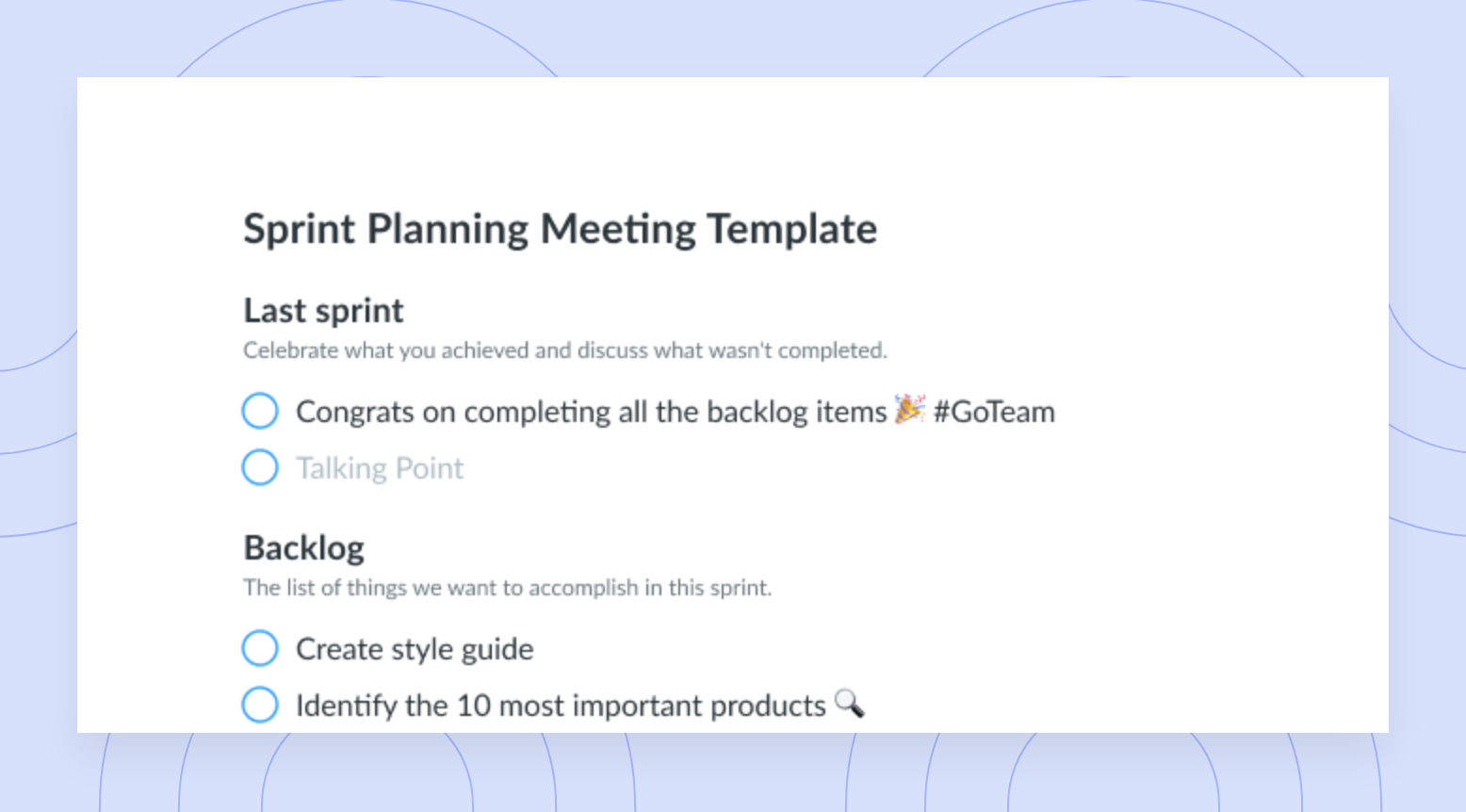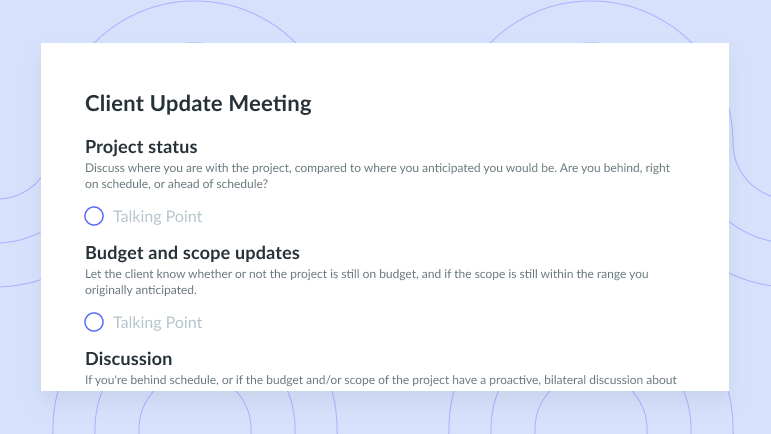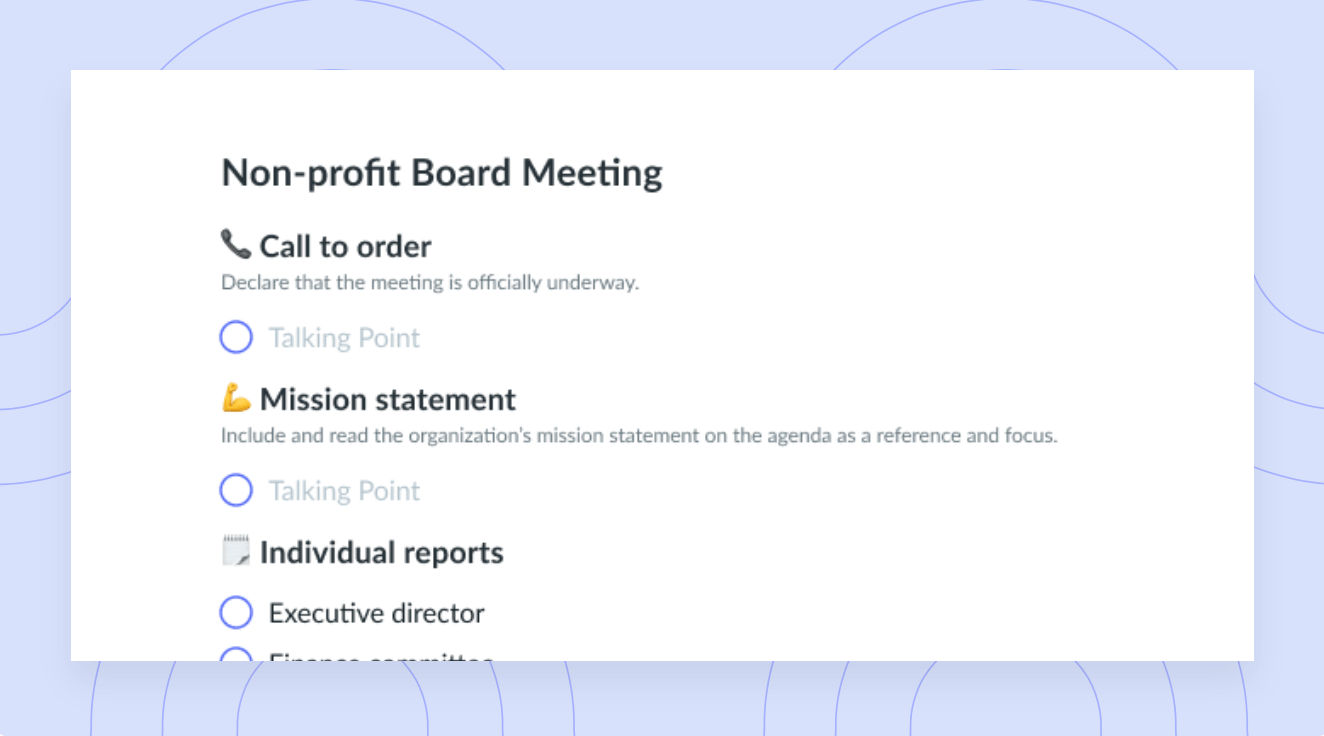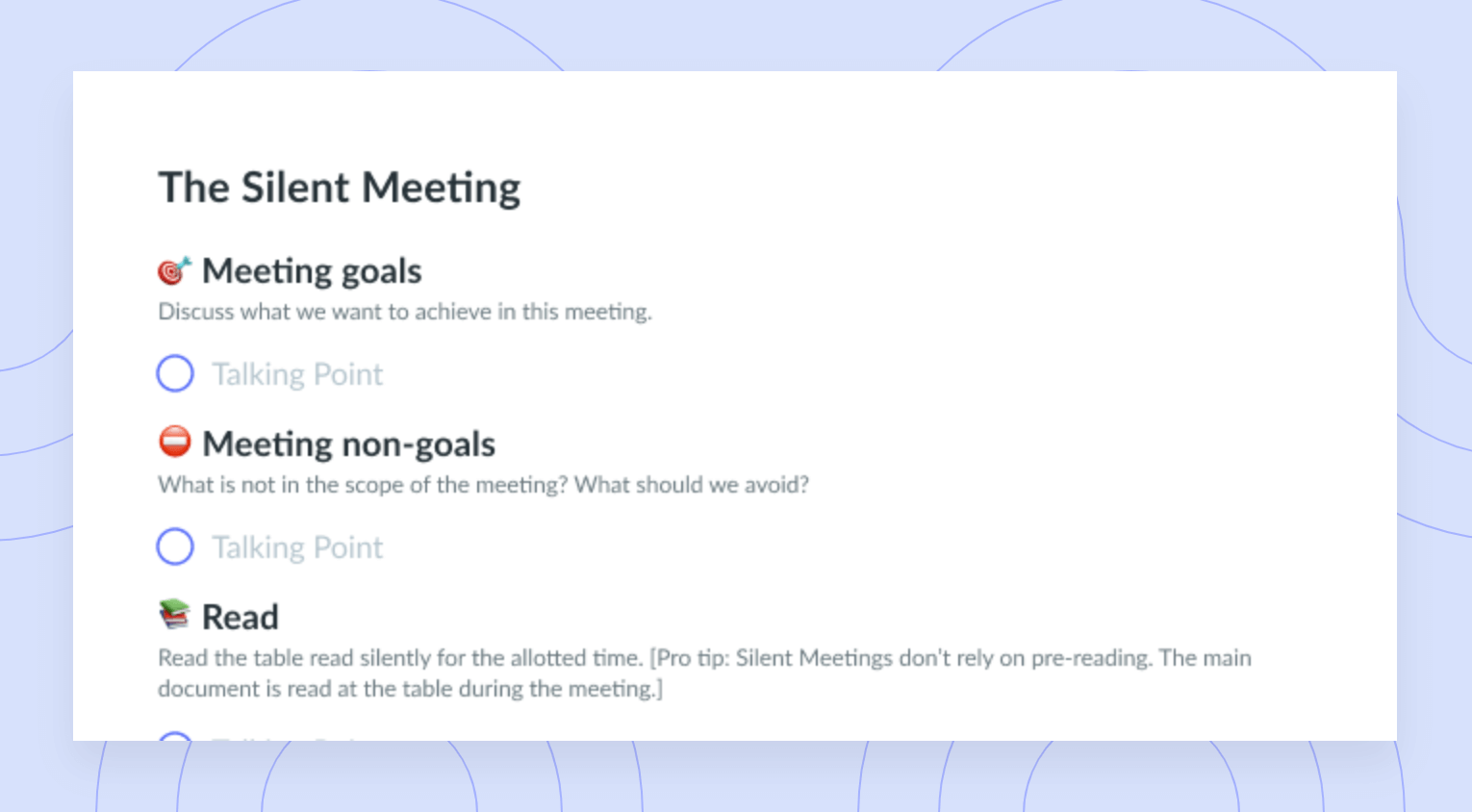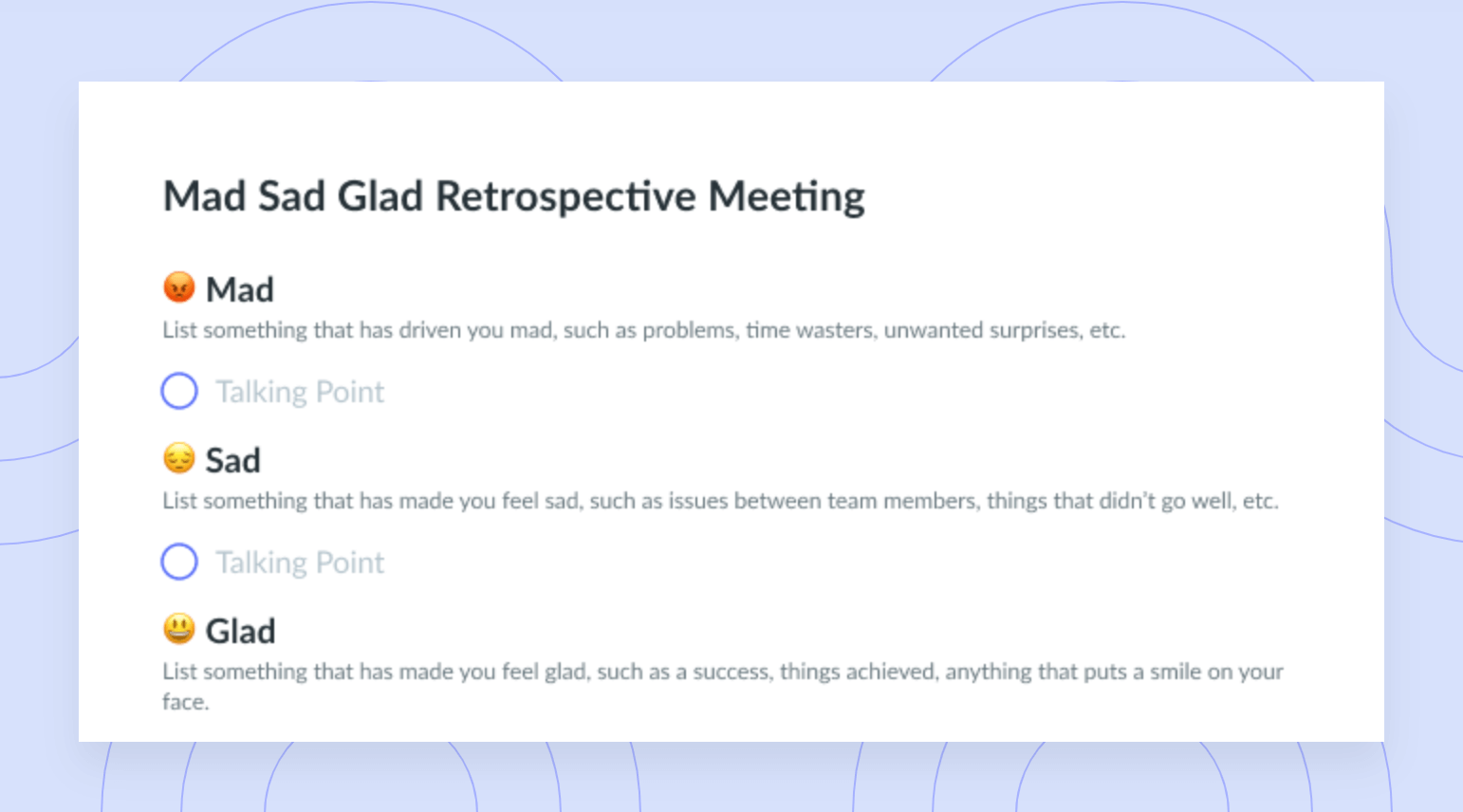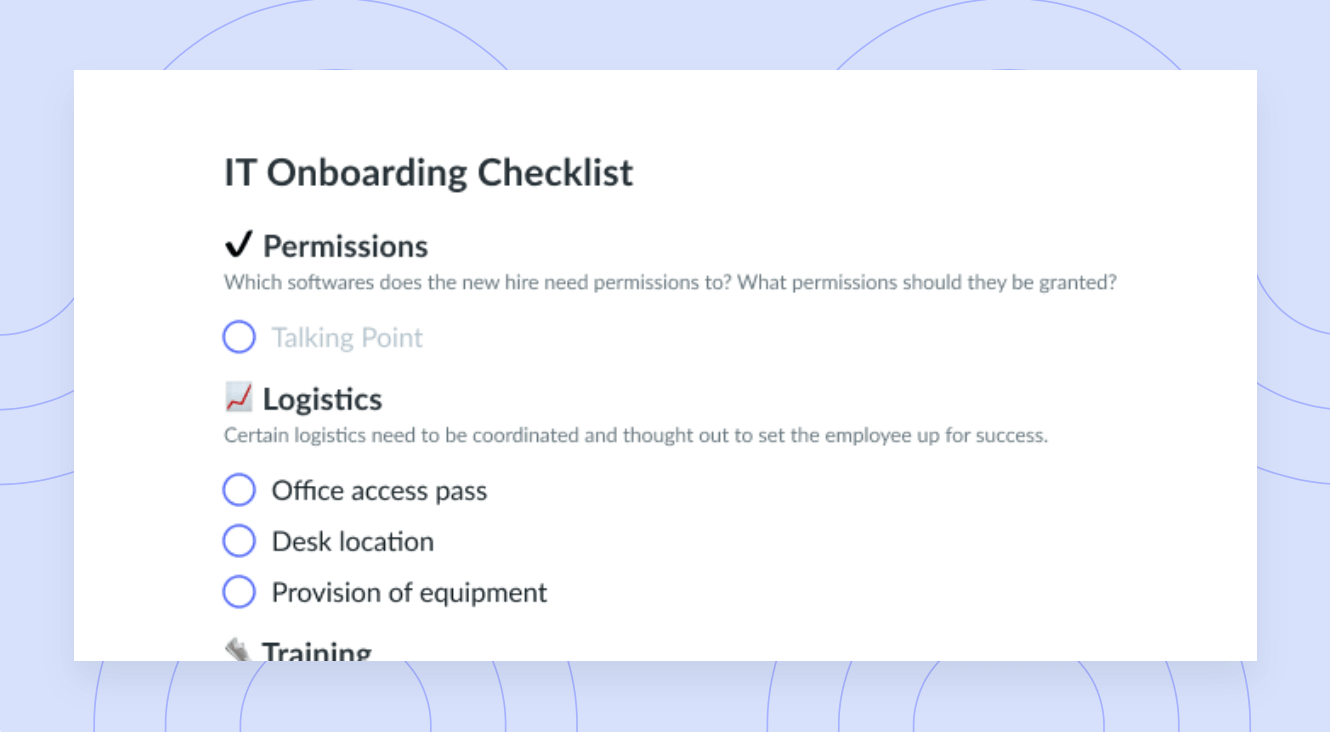How to Decide Between In-Person and Virtual Meetings
Here’s how to decide if in-person or virtual gatherings are best for your next meeting so you make the most out of everyone's time.
As much as you might love attending virtual meetings in your pajama bottoms (admit it, you’ve done it), in-person meetings are sometimes better. This article will show you when in-person or virtual is clearly superior and teach you what to ask when making your choice. Read on to learn everything you should know about in-person vs. virtual meetings.
How to decide between in-person and virtual meetings
If you gather your team on a regular basis, you might be wondering whether it’s better to hold certain meetings online or in-person. Below are some steps you should take when it’s time to make the in-person vs. virtual decision.
- Consider the nature of the meeting
- Follow gathering guidance
- Consider the complexity of the meeting subject
- Determine which will be more inclusive
- Confirm that the host is prepared
1 Consider the nature of the meeting
To decide whether you should have a virtual or face-to-face meeting, think about its core purpose. Namely, is the meeting task-based or relationship-based?
At a task-based meeting, you and your team will plan for an event, review schedules, or discuss potential issues. You can easily hold it online without making it less effective than you were in person. Think about it: Do you really need to be in-person to check boxes off a list? Especially if you already work remotely, you know you can probably do this one from home (or wherever).
A relationship-based meeting is a bit different. It focuses on people – an example could be a one-on-one meeting with your new associate. That’s why it’s better held in person. It’s a lot easier to read body language and be present with someone when a screen doesn’t divide you.

Delightful meetings
No matter if the meeting is virtual or in-person, make every meeting productive by sharing a collaborative agenda to encourage collaboration. Try a tool like Fellow!
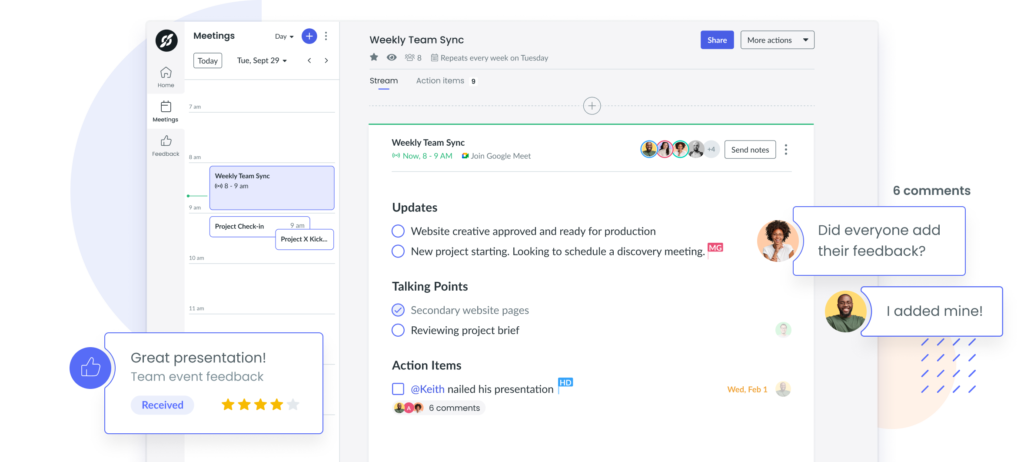
2 Follow gathering guidance
The COVID-19 pandemic has introduced some uncertainty – and new ways of gathering – to meeting in person. You’ll need to respect these guidelines, even if they’re not binding or mandatory. You’ll also need to consider your attendees’ personal boundaries if you meet face-to-face, such as mask-wearing and spacing out seats. For starters, make sure you look at local, state, and federal guidelines for direction. In the absence of local regulations, you might want to take precautionary steps based on how the virus is trending in your area.
3 Consider the complexity of the meeting subject
Often, complex problems that require team effort to solve are best addressed in person. A few examples of a high-complexity meeting include project planning, conflict mediation, and leadership development. Conversely, skills training or committee briefings are typically low-complexity and can be online meetings.
4 Determine whether an in-person or virtual meeting will be more inclusive
Let’s say you’re having a meeting with someone who lives in another state or country. In that case, a virtual meeting can almost make it seem like you’re in the same room. Virtual meetings bring people together across borders while allowing for all kinds of communication styles. Visual learners get the opportunity to see through a shared screen, and auditory learners get to be part of the conversation.
5 Confirm that the host is prepared
Even deep into the digital age, not everyone is equally tech-savvy. That could include yourself or whoever you’ve tasked with hosting the meeting. Don’t be afraid to ask: Does the host really have what it takes to host an effective virtual meeting? If not, returning to the conference table is probably your best bet.
Why might you need both in-person and virtual meetings?
Whether you and your team have a preference for meeting type, you’ll likely fare best with a mix of both. And sure, the choice between the two is often simple – complex, people-oriented matters should happen in person, everything else can be virtual. But still: Both meeting types matter. Here’s why.
- Certain topics require in-person review or discussion. Sure, this is starting to sound like a broken record, but seriously: Resolving a complicated subject matter is so much easier in person. And if you need to review a physical product, video makes it way harder to get a clear picture of what you’re discussing.
- Virtual meetings offer more flexibility. Virtual meetings are super easy on everyone’s schedules. You can attend them whether you’re working from home, traveling, or not feeling all that great. Holding your meeting online makes attending and participating a breeze no matter your location.
- In-person meetings give you the ability to read non-verbal cues. You can’t always tell how a person is feeling through a computer screen. When you hold a meeting in person, you can more easily pick up on one’s gestures, facial expressions, and body language. Being in tune with all that makes for much more effective communication.
Example of meetings that would be better off in person vs. virtual
At this point, you could probably decide whether your recent meetings would’ve been better in-person or virtual based on what you’ve read here. But here’s a shortcut: Certain types of meetings are almost always better in-person than virtual. Read on to discover which meetings you can more easily conduct online than face-to-face.
In-person meetings
Here are a few examples of meetings that you should try your hardest to hold face-to-face.
- Initial meetings. If you’re meeting with someone for the first time, it’s best to meet in person. Doing so allows you to get a better understanding of each other’s needs. Think about it: How easy is that when you’re facing the potential interruptions and lags of a video call? Those just aren’t concerns in person.
- Project proposals. For project proposals, it’s often easier to see the big picture in person. If someone is presenting through a screen, you could miss certain details. In the long term, neglecting those tiny parts could land you and the other people on the project in a sticky situation.
- Projects that require more abstract thinking. Some projects require you to look over data, and most people can do that on their own. For less data-driven projects that lean more on critical thinking than numerical analysis, lengthy collaborative conversations might be necessary. That’s much easier to do when everyone is there in-person.
- Team-building meetings. Surely, you’ve heard people talk about how doing everything through screens has them feeling disconnected. That sort of disconnection can make team-building meetings pretty draining, so try holding them in-person instead. When you’re all face-to-face, team-building games – which are often pretty hands-on – are usually way more fun.
Virtual meetings
Below are a few meetings you can hold online rather than in person.
- Certain client meetings. Once you meet your client face to face for the first time, you can hold certain meetings with them virtually. The choice here depends on what you want to cover. Quick updates and general feedback can happen virtually, as can conversations about the little details of a project. Conversely, discussions about expanding your relationship in the future might be better in-person.
- All team standups. Your daily standup meetings should be short and to the point – if they’re longer than 15 minutes, you’re doing it wrong. That brevity is pretty conducive to virtual meetings. Your teammates can easily provide each other with quick updates from across a screen.
- Check-in meetings. Checking in with individual team members is rarely a whole big formal shebang. Sure, your check-ins might be a bit longer than your daily stand-ups, but they’re so casual that you can hold them virtually. Plus, if you and the other person are both more into virtual than in-person meetings, why would you choose the latter?
Both in-person and virtual meetings can be great
Once you’ve decided whether your meeting should be virtual or in-person based on its subject matter, complexity, and attendees, it’s time to start planning. That means, among other things, crafting a meeting agenda and sending it out. With Fellow, you can do all that and take collaborative meeting notes and assign meeting action items in real-time. Whether you’re calling in from home or meeting face-to-face, Fellow helps you make the most of the occasion.









